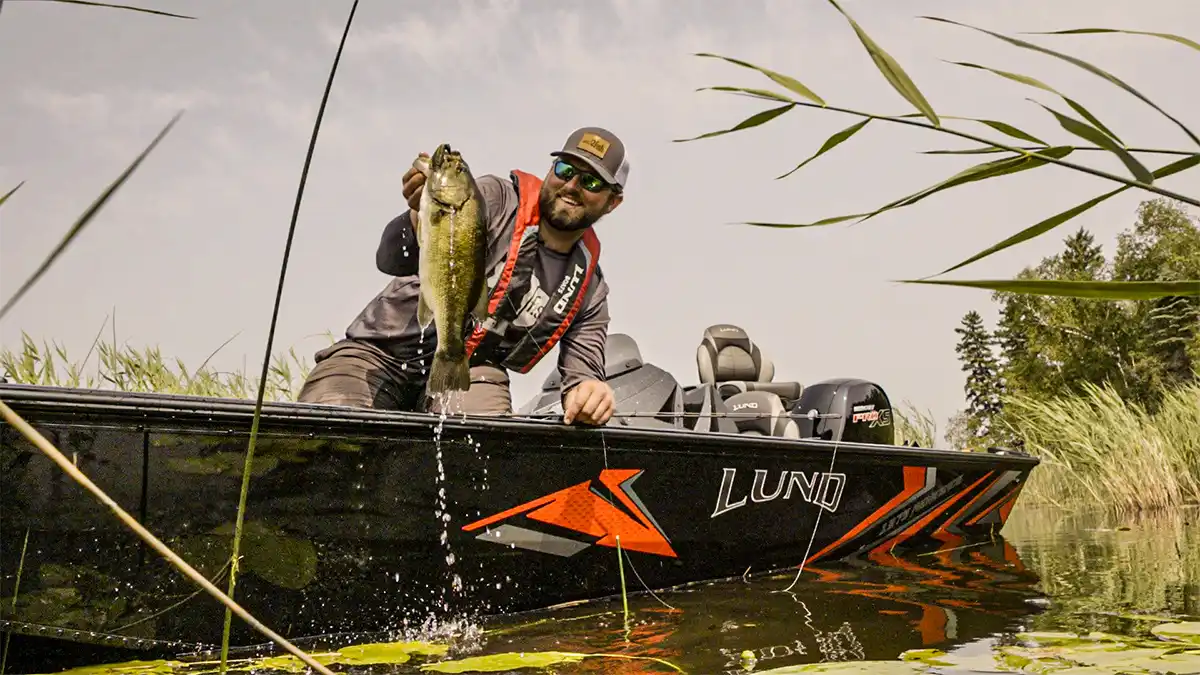In the heat of the summer, bass fishing can get really tough throughout much of the country. With the high water temperatures combined with excess fishing pressure, it’s not always easy to get a bite. Fishing thick emergent grass, however, is an awesome way to get some really nice bites from summer bass. Shallow emergent grass attracts small baitfish, panfish, and of course, big bass follow to prey on their favorite forage.
TACKLE USED (retail links)
- BAIT – Strike King Magnum Rage Bug
- HOOK – Strike King Hack Attack Heavy Cover Flipping Hook, 5/0
- WEIGHT – Strike King Tour Grade Tungsten, 5/8-ounce
- PEG – Strike King Tour Grade Weight Peg
- ROD – Lew’s Super Duty Speed Stick Casting Rod, 7’6″ Heavy
- REEL Lew’s Super Duty LFS Casting Reel, 8.3:1
- LINE – Strike King Tour Grade Braid, 50-Pound
- SUNGLASSES – Costa Del Mar Fantail
- BOAT – Lund Boats 1975 Renegade
Wired2fish staffer Nick Dumke enjoys a lot of success targeting this type of cover with pitching and flipping baits. He has caught a lot of nice bass with this technique using larger soft-plastic baits such as a Strike King Magnum Rage Bug. Because summer vegetation can be so thick, this larger-profile bait helps the bass locate the bait in heavy cover. The less they have to hunt for it, the more bites you’ll get, according to Dumke.
High-gear ratio reels and heavy braided line are also imperative if you want to maximize this bite. Dumke doesn’t use anything less than 50-pound braid and isn’t afraid to step it up to 65-pound braided line in especially heavy cover. The name of the game is getting them out of the cover as quickly as possible and tough gear is absolutely necessary to accomplish that.
In regards to hook selection, it’s hugely important to use a heavy-wire flipping hook. Dumke really likes a 5/0 flipping hook paired with a 5/8-ounce weight as he targets irregularities in vegetation. These small spots are key when you’re looking for a big bite because bass naturally position themselves on irregularities. Whether it’s a small point the size of a frying pan or a tiny hole in the grass the size of a paper plate; these are the areas bass frequent this time of year.












